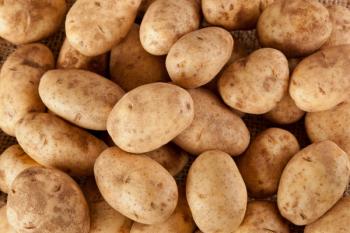
Subterranean Transport of Microplastics Revealed in Karst Springs: A Study Utilizing Raman Spectroscopy
A recent study utilized Raman spectroscopy to confirm the presence of microplastics in karst spring waters.
Frequently using plastic materials has resulted in an abundance of plastic waste. The situation has become a huge global challenge for environmental sustainability as a result. Although the pollution of large water bodies with microplastics has been extensively studied, the presence of microplastics in karst spring water has remained unexplored until now (1). Researchers from Babeș-Bolyai University in Romania, led by Simona Cîntă Pînzaru, employed Raman spectroscopy to confirm the existence of microplastics in samples collected from rural karst springs in the Apuseni Mountains (1). Their work has been published in Spectrochimica Acta Part A: Molecular and Biomolecular Spectroscopy (1).
In the study, two sets of water samples, each comprising 1000 liters, were collected from the Țarina and Josani karst springs during springtime 2021, with an additional sampling conducted in autumn 2021 (1). These samples were subjected to filtration and analysis. To identify the plastic type and pigment present in the microplastic fragments, the team created a customized database using Python programming language, merging separate Raman databases for plastics and pigments (1). By comparing the reference pigment-plastic spectra with potential microplastics detected on filters, the researchers utilized Pearson's coefficient to quantify the level of similarity (1).
The research team determined that there was a presence of microplastics in the karst spring waters, with a quantitative estimation of 0.034 fragments or fibers per liter in the Josani spring and 0.06 in the Țarina spring (1). The subsequent autumn sampling conducted after five months revealed a concentration of 0.05 microplastics per liter (1). The spectral analysis revealed that the majority of microplastics were predominantly composed of polyethylene terephthalate (PET), followed by polypropylene (1). Notably, a significant number of blue micro-fragments were identified based on their distinctive spectral fingerprints of copper phthalocyanine pigments (pigment Blue 15) or indigo carmine (pigment Blue 63) (1). These findings surpassed the inherent spectral background level observed in Raman spectra of naturally contaminated micro-samples (1).
The origin of these microplastics in mountain karst spring waters and their potential decrease over time is an important topic. This study sheds light on the subterranean transport of microplastics, highlighting the need to address plastic pollution even in these unique and relatively pristine water sources. Further research and mitigation efforts are essential to safeguard karst environments from the detrimental effects of microplastics and ensure the preservation of water quality for both ecosystems and human communities.
Reference
(1) Nesterovschi, I.; Marica, I.; Levei, E. A.; Angyus, S. B.; Kenesz, M.; Moldovan, O. T.; Pinzaru, S. C. Subterranean transport of microplastics as evidenced in karst springs and their characterization using Raman spectroscopy. Spectrochimica Acta Part A: Mol. Biomol. Spectrosc. 2023, 298, 122811. DOI:
Newsletter
Get essential updates on the latest spectroscopy technologies, regulatory standards, and best practices—subscribe today to Spectroscopy.



